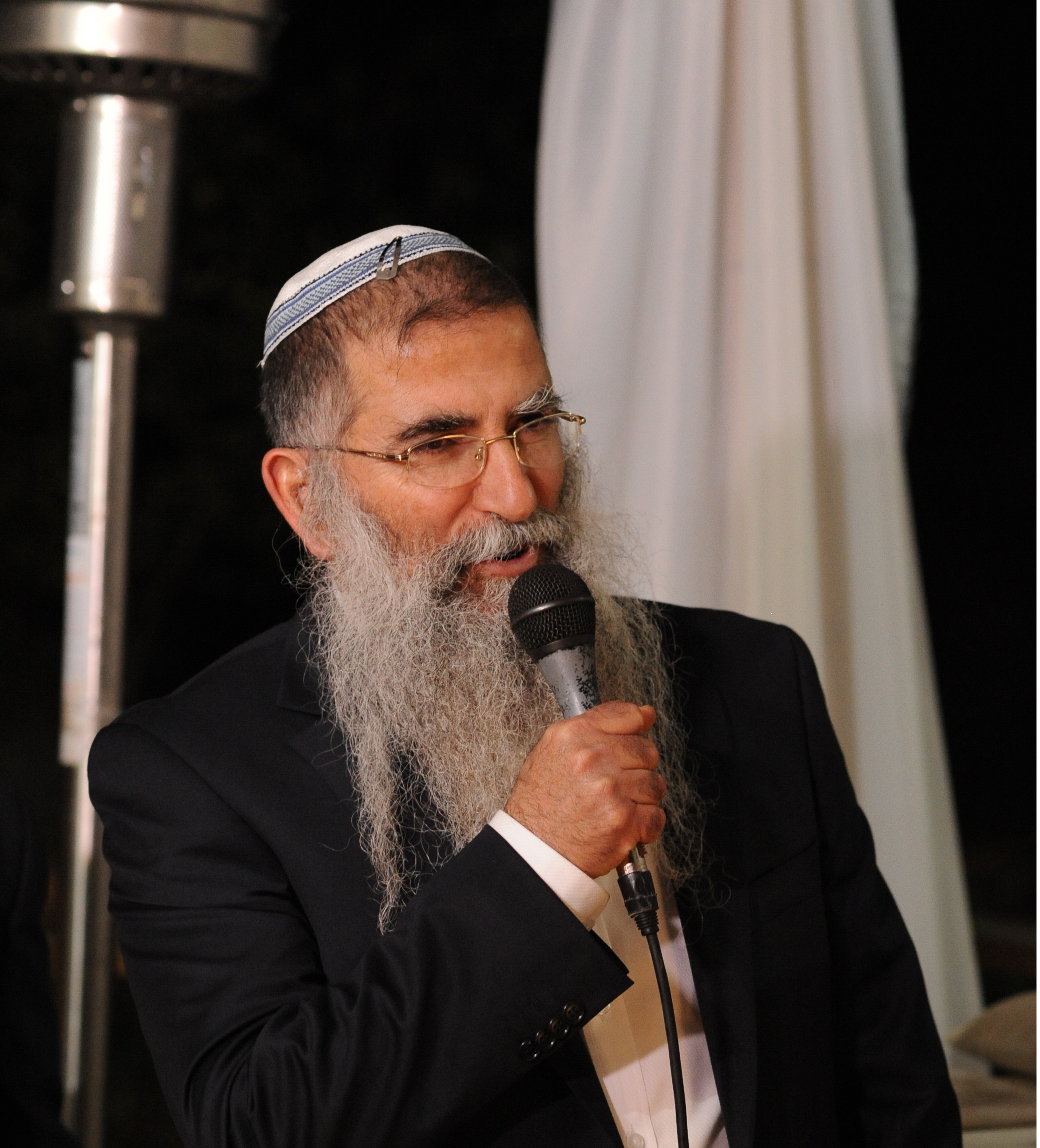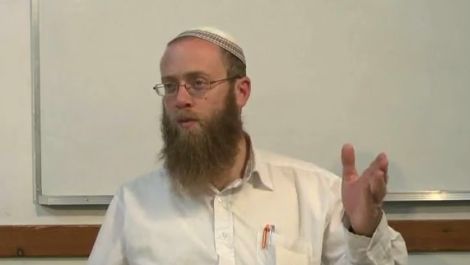Beit Midrash
- Torah Portion and Tanach
- Shmot
- Shmot
- Torah Portion and Tanach
- Tanach
- Yeshayahu
Question #2:Why do we read this Haftarah?
Question #3:What unusual fact about this week’s Haftarah inspired me to discuss this topic this week?
Before providing the clues to answering these questions; let's first understand some background.
The Word Haftarah
I remember, as a child, assuming that the word Haftarah was pronounced half-Torah, because it was always much shorter than the Torah reading. Unfortunately, I occasionally hear adults mispronounce the word this way, too.
Although there are several interpretations of the word Haftarah, it is usually understood to mean completing, as in "completing the reading of the Torah" (Levush, Orach Chayim 284:1).
What Should We Read?
Chazal established specific Haftaros for some Shabbosos and Yomim Tovim (Megillah 29b- 31b). During weeks when no specific Haftarah was instituted, we should recite a Haftarah appropriate to the parsha.
Sometimes, the Haftarah relates not to the parsha, but to the season, such as during the Three Weeks and on the seven consecutive Shabbosos following Tisha B’Av. We also find that some places had a custom on a Shabbos aufruf to read the Haftarah from Yeshayahu that concludes, "And as a chosson rejoices with his kallah, so shall Hashem rejoice with you" (Terumas Hadeshen #20).
On most Shabbosos, when there was no requirement to read a specific section of Navi, each community would choose a selection of Navi reminiscent of the parsha. Indeed, if one looks at old Chumashim and books of community minhagim, one finds many variant practices. In addition, several sefarim mention different customs, and the Encyclopedia Talmudis provides a very extensive listing. Particularly, Sephardic and Ashkenazic practices often vary from one another, especially regarding minor differences, such as exactly where to begin or end the Haftarah, or whether to skip certain verses.
However, our Chumashim usually mention only the most common selections of Navi that have become generally accepted, only mentioning the differences between Sefardic, Ashkenazic and occasionally Italian practices.
Every Three Years
Today, the universal practice is to complete the entire Torah reading every year. However, in the times of the Gemara and for many centuries afterward, some communities read much smaller sections of the Torah every week and completed the Torah reading only every three years. Those communities also divided the Haftarah into three-year cycles by reciting a Haftarah that corresponded to their shorter readings. I have seen photographs of old manuscript Haftarah books based on the three-year system, where each sub-parsha has the name of the first words of the week's portion. In the selection I saw, Parshas Vaeschanan was divided into three parts named Parshas Vaeschanan, Parshas Az Yavdil Moshe, and Parshas Shema Yisroel.
How is Parshas Shemos Unique?
Now is the time to address the questions I raised above:
Which Haftarah does Klal Yisrael read this Shabbos?
Why do we read this Haftarah?
What unusual fact about this week’s Haftarah inspired me to discuss this topic this week?
There are many different customs regarding which Haftarah to read. On no other Shabbos am I aware of as many different customs as this Shabbos. I am aware of five completely different choices for the Haftarah reading for Parshas Shemos! On many weeks, Ashkenazim and Sefardim either begin or end in different places, or add or skip certain pesukim, but the basic reading is the same. The five selections I saw mentioned for this week's Haftarah are all from Neviim Acharonim, but they are five completely different readings. The Abudraham, who lists different customs regarding what to read on each week’s Haftarah, cites three alternate haftaros for Parshas Shemos, each from a different one of the three major seforim of Nevi’im Acharonim: Yeshayahu, Yirmiyohu and Yechezkel. And yet, the standard Haftarah read in Ashkenazi communities for this Shabbos is not any of the three that Avudraham quotes, which is highly unusual.
What do Ashkenazim read?
To the best of my knowledge, all Ashkenazic communities nowadays read Haba'im Yashreish Yaakov, from the Book of Yeshayahu (27:6 - 28:23). There does not seem to be any obvious reason to associate this passage from Yeshayahu with parshas Shemos. Why do we read this Haftarah? Rashi, in his commentary to the first words of the Haftarah, notes that the first words mentioned by Yeshayahu refer to the Bnei Yisroel going down to Mitzrayim, similar to the first words of this week’s Torah reading. Thus, although the rest of the Haftarah has little connection to the parsha, the beginning allusion was sufficient to choose this particular Haftarah for this week.
What do Sephardim and Edot Hamizrah read?
Some oriental communities, particularly those originating from parts of Yemen or Iraq, read from Yechezkel: Ben Adom Hoda es Yerushalayim (Yechezkel 16:1- 14), which is one of the three selections mentioned by Abudraham. This portion is also mentioned by the Rambam as the Haftarah for this week, which is probably the source for the Yemenite communities. Reading these words of Yechezkel, one can readily see why this was chosen for this week's Haftarah. It describes the bleak origins of the Jewish people. Some of its verses have found their way into the Hagadah that is recited on Pesach-night, for the same reason.
However, most Sephardic communities read the beginning of the book of Yirmiyohu, Divrei Yirmiyohu. This Haftarah is very familiar to Ashkenazim because it is read on the first of the Three Weeks, usually parshas Pinchas, but occasionally on Parshas Matos.
Since this Haftarah discusses the impending attack of the Babylonians on Israel, it seems extremely appropriate to the Three Weeks; but why do Sephardim read it on parshas Shemos? Some note that several analogies between Moshe and Yirmiyohu surface in the parsha and Haftarah. Both Yirmiyahu and Moshe are beginning their careers as prophets, reluctantly. Yirmiyahu says that he is unable to speak, as he is little more than a child, and Moshe claims that he cannot speak due to physical impediment.
However, I must admit that I am baffled why it has become more commonly accepted to read either of these two haftaros: Habaim Yashreish Yaakov or Divrei Yirmiyohu, rather than Yechezkel Chapter 20, whose relationship to our parsha is more obvious. This passage mentions that Hashem made Himself known to the Jewish people in Mitzrayim, and that the Jews should not assimilate and follow Egyptian idolatrous practices. Indeed, this Haftarah was read by many Yemenite communities, yet it failed to gain acceptance in most other communities, either Ashkenazi or Sephardi, and furthermore, is not one of the three haftaros mentioned for this parsha by the Avudraham. (I refer our readers to Rav Mendel Hirsch’s commentary on the haftaros, where he suggests a connection between our Haftarah and parshas Shemos.)
Thus, I find two very surprising factors about the Haftarah we read this week.
1. There are, or probably more accurately now, were at least five different accepted customs followed in choosing the Haftarah for this week, more than I am aware of for any other Shabbos.
2. The ones standardly read in accordance with most Ashkenazi or Sephardi customs are the least obvious choices – meaning they are choices where we must strain to understand why they were chosen rather than other, more obvious candidates.
Conclusion:
We thus see that recital of the weekly Haftarah is an ancient custom and should be treated with respect. We may wonder why certain passages were chosen to be read on any given week; and at times, cannot even say that these were the most appropriate choices. In any event, we should pay attention to the Haftarah reading. We can gain much from understanding the inspiring messages that the navi is teaching.
This Shiur is published also at Rabbi Kaganof's site

The Challenge of Jewish Leadership
Rabbi Jonathan Sacks | 14 Shvat 5784

A Legend In His Own Lunchtime
Rabbi Yaakov Asher Sinclair | Tevet 23 5781

Social Justice Starts (and Ends) at Home
Parashat Shemot
Rabbi Moshe Erenreich | Shemot 23 Tevet 5764























